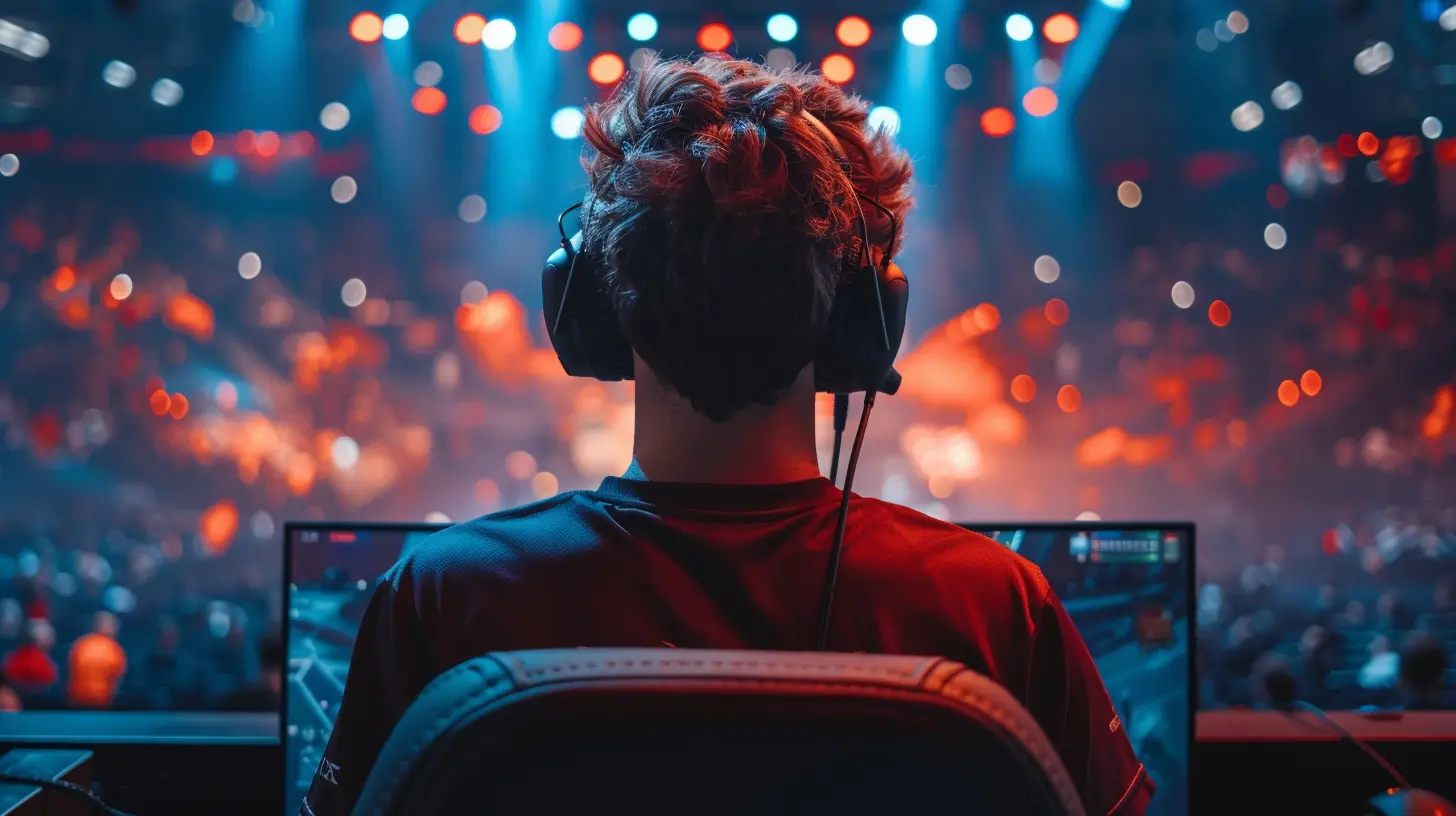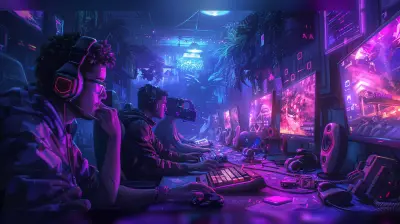How Esports Teams Navigate the World of Streaming and Content Creation
13 September 2025
It’s no secret that esports has blown up over the past decade, evolving from a niche corner of gaming into a global phenomenon. But while teams are dominating tournaments and snagging prize pools that rival traditional sports, there’s another game they’re working hard to master: streaming and content creation. The reality? Winning games is only part of the battle. In today’s world, the real MVPs are those who can build an audience, engage fans, and create content that keeps viewers coming back for more.
So, how exactly are esports teams juggling the demands of competitive play and becoming rockstars in the streaming realm? Let’s break it down. 
The Rise of Esports Streaming: Why It’s a Big Deal
Streaming is the beating heart of esports. Think about it—how many people actually attend esports events in person? Sure, stadiums are filling up, but millions more are tuning in online. Platforms like Twitch, YouTube Gaming, and even TikTok are the modern-day arenas for fans.But there’s more to it than just showcasing skills. Streaming offers teams a direct line to their audience. It’s not just about what you play but how you connect. Fans want to see the human side of their favorite players—whether it's rage-quitting in a casual match, sharing behind-the-scenes stories, or even just vibing to lo-fi beats while chatting with viewers.
Esports teams know this. They understand that streaming isn’t just supplemental—it’s pivotal to building brand loyalty and increasing revenue streams. 
The Juggling Act: Balancing Competitive Play and Content Creation
Let’s be real—being an esports player is already a full-time job. Between grinding for hours, strategizing with teammates, and showing up for endless scrims, where’s the time for anything else? And now we’re asking these players to be streamers, vloggers, and entertainers too? Sounds excessive, doesn’t it?But the best teams know how to strike a balance. It starts with understanding that content creation isn’t about adding more to their plate; it’s about working smarter, not harder.
1. Teamwork Makes the Dream Work
Not every player on a team needs to be a star streamer. Some players are natural entertainers—charismatic, funny, or just ridiculously skilled—and they can take the lead on content. The rest can focus on their gameplay. Having dedicated roles within the team for “performance” vs. “content creation” helps divide and conquer.2. Batch Content Like a Pro
One trick esports teams use is batch recording. During boot camps or tournaments, it’s common to see teams filming vlogs, highlights, and promotional content in a single sitting. Think of it like meal-prepping for the week. This allows them to stack their content library without constantly interrupting their primary focus: winning.3. Integrated Streaming Schedules
For many esports games, practice and streaming don’t have to be separate. Teams often go live during scrims or rank grinds, giving fans an authentic look at their journey while killing two birds with one stone.
The Power of the Personality-Driven Brand
Gone are the days when fans were loyal to teams simply because of their legacy. These days, it’s all about personalities. People don’t just want to root for a team; they want to connect with players they can relate to or admire.Esports teams like FaZe Clan, TSM, and G2 Esports have mastered this. They’re not just selling skill—they’re selling lifestyle. Their players are influencers, fashion icons, and content creators all rolled into one.
1. Relatability is Key
Fans want to see the grind but also the goof-ups. They’ll tune in for your epic plays, but they’ll stay for the moments when you make jokes, fail gloriously, or share your love for pineapple pizza (controversial, I know).2. Memes and Viral Content
Teams that embrace meme culture are crushing it. Short, funny clips on platforms like TikTok and Instagram Reels can catapult a player or team into viral fame. Plus, they’re incredibly shareable.
The Business Side: Why Teams Are Prioritizing Content
Let’s not kid ourselves—there’s big money in streaming and content creation. Prize pools might be the flashy headline, but sponsorships, ad revenue, and merch sales are the bread and butter of esports teams.1. Sponsorship Gold
Sponsors are much more likely to back teams with strong social and streaming presence. Why? Because they’re not just sponsoring a team—they’re gaining access to that team’s audience. The bigger the audience, the better the deal.2. Diversifying Revenue Streams
Relying solely on tournament winnings is a risky strategy. What happens when you lose? Streaming, YouTube ad revenue, and selling merch provide consistent income that doesn’t depend on bringing home trophies.Tools of the Trade: Making Streaming and Content Easier
The good news? Teams don’t have to do this all on their own. From tech tools to hiring professionals, esports organizations are getting smarter about how they approach content creation.1. Content Teams
Many top-tier organizations now have dedicated content teams. These are people behind the cameras, editing software, and social media accounts that make players look like stars. Think of them as the pit crew for the sleek race car that is an esports team.2. Streaming Gear and Software
Good content starts with the right tools. Teams invest in high-quality cameras, mics, and streaming software to ensure their streams and videos look professional. Nobody’s sticking around if your stream sounds like it was recorded from a toaster.3. Data Analytics
Analytics tools help teams understand what their audience loves. From tracking viewer counts to figuring out the best times to post, data is the secret weapon for maximizing impact.Challenges on the Road to Content Glory
Of course, it’s not all sunshine and pixel-perfect thumbnails. There are challenges that esports teams have to navigate when it comes to streaming and content creation.1. Burnout is Real
Balancing competitive gaming and content creation can be exhausting. Players risk burnout when they’re constantly “on”—whether it’s in-game or in front of a camera.2. Trolls and Toxicity
The internet can be a harsh place, and being in the public eye means dealing with trolls, haters, and toxic comments. Teams often need to set boundaries or even bring in moderators to manage chat environments.3. Staying Authentic
Audiences can spot a fake from a mile away. Trying too hard to appeal to an audience can backfire if it feels forced or inauthentic. Teams have to walk the fine line between crafting content and keeping it real.What Does the Future Hold?
As streaming and content creation become even bigger parts of the esports ecosystem, the line between athlete and influencer will continue to blur. In the future, we might see esports teams investing even more heavily in their media presence—think Netflix-style documentaries, partnerships with mainstream brands, and multi-platform dominance.But at the core of it all, one thing won’t change: fans want to connect. Whether it’s through clutch plays, hilarious streams, or heartfelt moments, the teams that can foster meaningful relationships with their audience will always come out on top.
Wrapping It Up
Esports isn’t just about the games anymore—it’s about the stories, the personalities, and the connections teams build with their fans. Navigating the world of streaming and content creation isn’t easy, but for those who pull it off, the rewards are massive. Whether it’s through relatable content, viral moments, or just showing up as their authentic selves, esports teams are proving they’ve got what it takes to thrive both inside and out of the game.all images in this post were generated using AI tools
Category:
Esports TeamsAuthor:

Lucy Ross
Discussion
rate this article
1 comments
Georgina Hines
Great insights into the intersection of esports and content creation! It’s fascinating to see how teams adapt and evolve in this dynamic landscape. Looking forward to future developments!
September 23, 2025 at 3:57 PM

Lucy Ross
Thank you! I'm glad you found the insights valuable. Exciting times ahead for esports and content creation!


